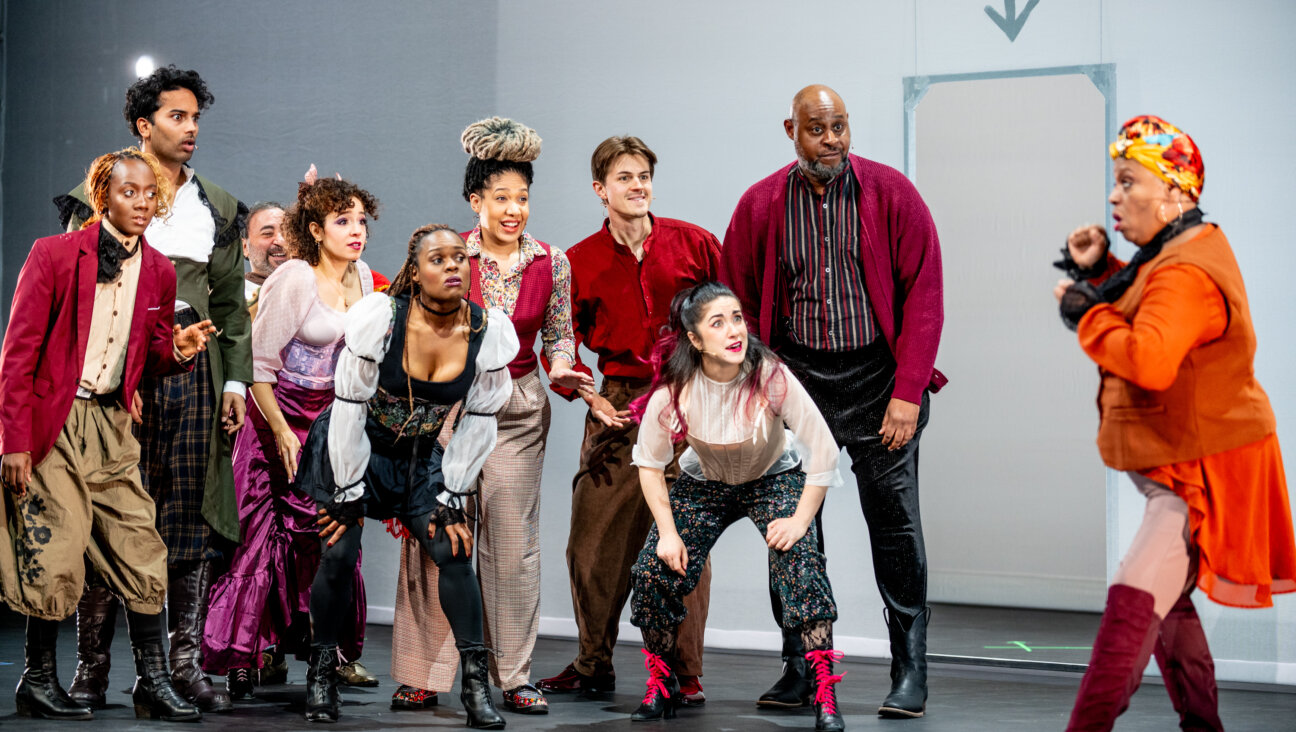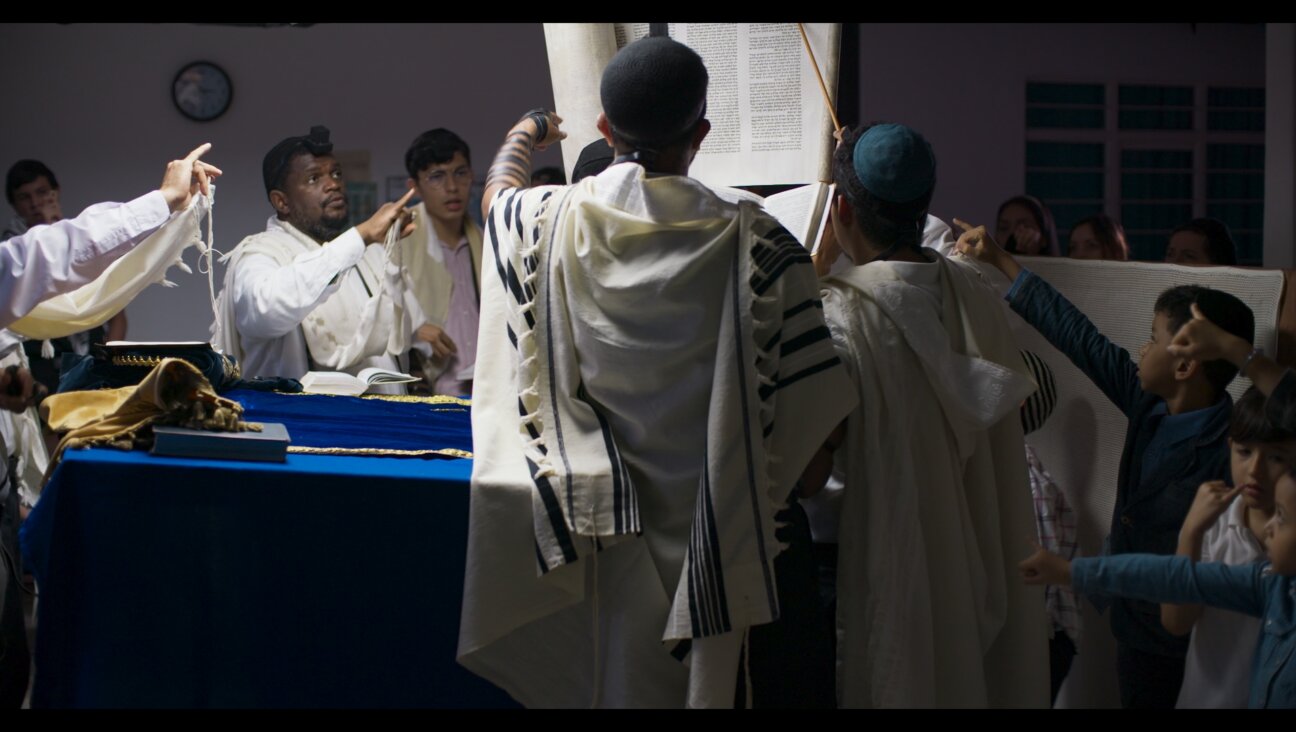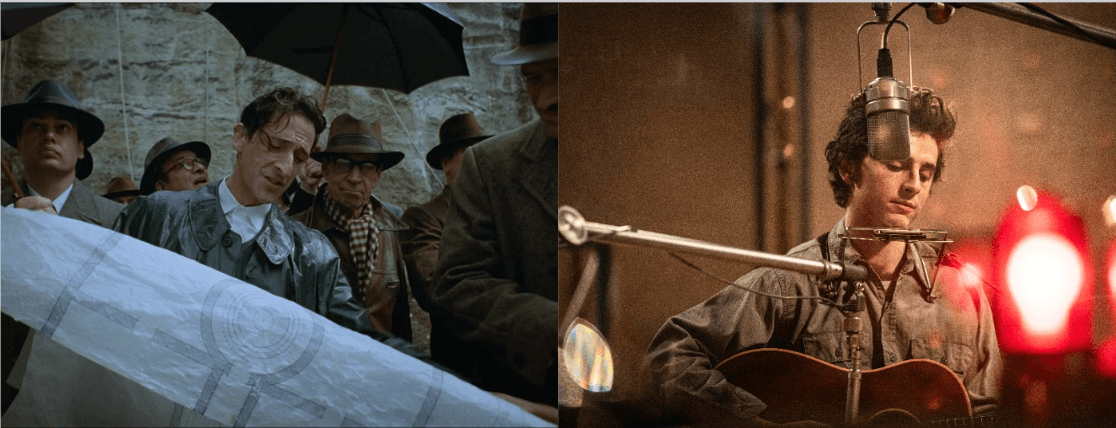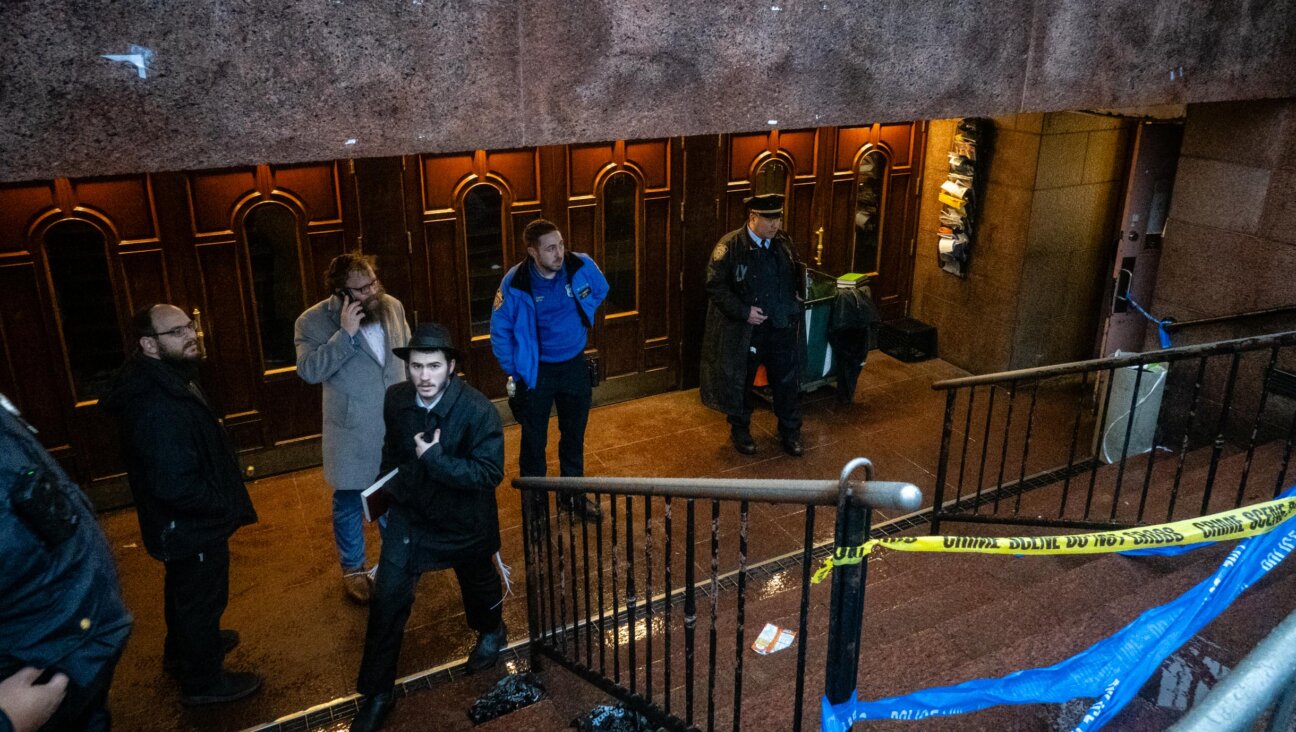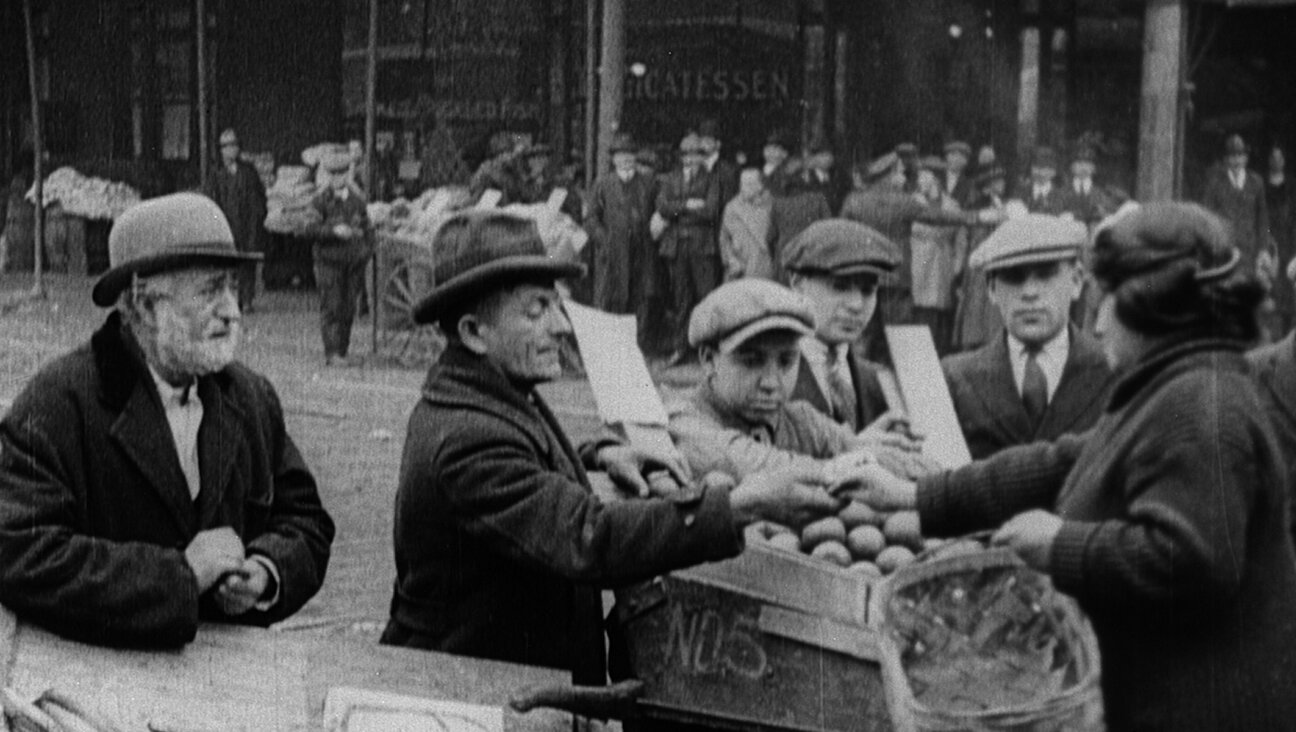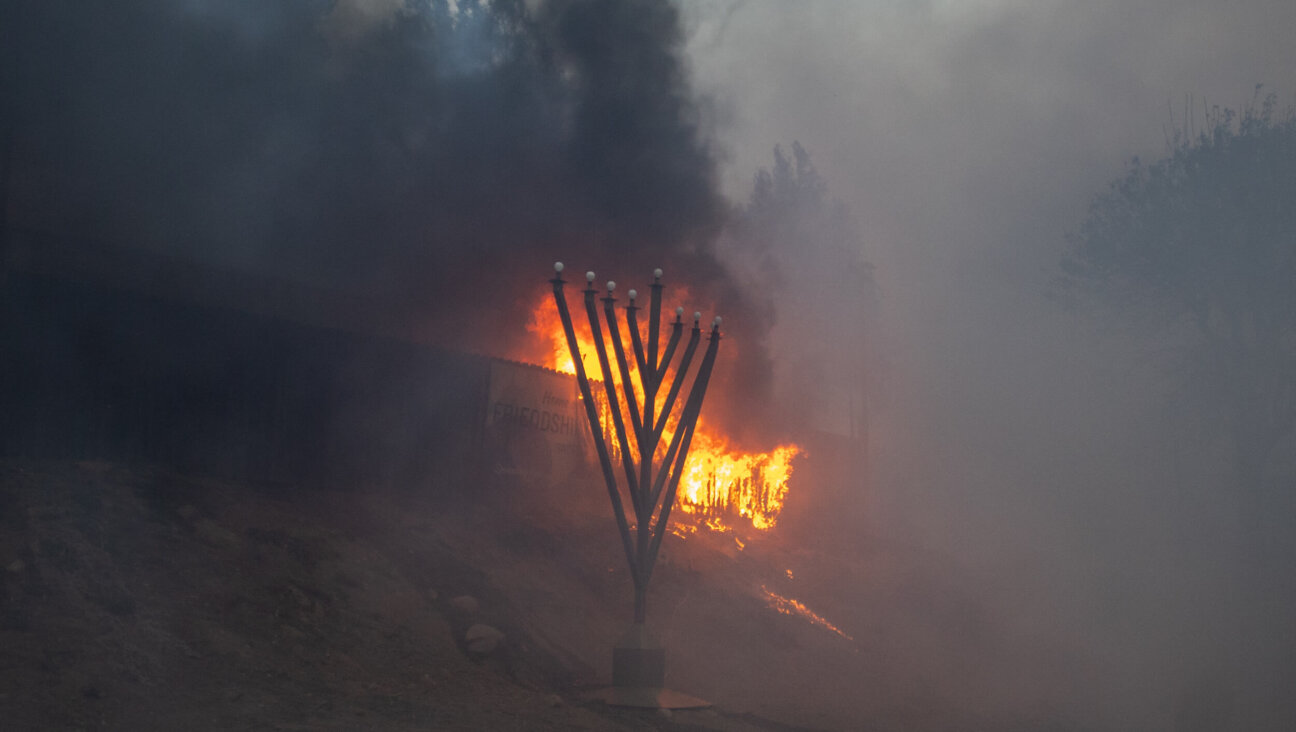A Poet of Israel’s Pain, And Its Hope
On Ruins & Return
By Rachel Tzvia Back
Shearsman Books, 104 pages, $15.
It is written in the Talmud that after the destruction of the Second Temple, Rabbi Akiva and three prominent rabbis saw a fox scavenging through the Holy of Holies. Though the other rabbis wept, Akiva began to laugh, reminding his colleagues of Zechariah’s prophecy that one day, Jewish men, women and children will return to the streets of Jerusalem. Like Akiva, Israeli poet Rachel Tzvia Back has not abandoned hope. She, too, sees the promise of renewal in Israel’s pain. And though her newest collection, “On Ruins & Return,” shatters and stings, though her images force readers to confront unsavory scenes and to broach sore subjects, ultimately her words comfort.
The focal image in “On Ruins & Return” is the buffalo — an animal that, like Israel, bears a legacy of violence and near-extinction. Part prophecy, part mirage, part longing, part reality, the buffalo roams Back’s pages as if they are mountains, evolving with each peak and trough of the second intifada. In her introduction to the collection, Back describes the evening in 1999 when the buffalo first wandered into her life. Driving through the Jerusalem Hills at dusk, pregnant and dizzy, she pulled over to the side of the road. As she lifted her head, she saw a buffalo — anomalous in the Middle East — hiding in the valley. As the cars sped past her, the drivers unaware of what she had seen, Back realized that the buffalo, with its “dark peace and darker pain,” was a gift.
For the next six years, the buffalo wove in and out of her life, becoming her muse. At the dawn of the new millennium, Back and her family moved north to a small Jewish village in the Galilee and, believing that Israel was on the brink of peace, lost sight of the buffalo. With the shock of the second intifada in 2000, however, the buffalo returned to her. “In the rage and flames, the ripped-out street-lamps, the young boys shouting in the village square, the roads blocked with burning tires, the riot police shooting into the crowd,” Back describes in her introduction, “I remember the buffalo… and it allows me to write what I could not have otherwise.” As Back began to experience the intifada personally and intensely, the buffalo — previously an “it” in her poetry — became a “he.”
“The violence was so powerfully present, infiltrating our lives,” Back explained in a recent interview with the Forward. “The conflation of male and violence, scenes of men on both sides in anger, haunted me.” A poem from these early intifada years, “From Between Kastel and White Quarry Stone,” conveys Back’s entanglement with the buffalo, his domination of her existence:
What wakes
when I wake, wherever I wake,
what sleeps when I do, he is
what walks when I walk, his weight
the lead-marrow in my bones
For a time, Back could only channel hope through writing and giving readings in America, where she was raised and where her siblings still live. Though she is a sixth-generation Israeli, Back writes in English and is more comfortable giving readings in America than in Israel, where her politics are so personal. Many of the poems in “On Ruins & Return” have strong political implications — razed homes and wells, ambulances stopped at roadblocks, Arab families forced to stand outside in the cold night as soldiers in jeeps search their village — but a political agenda does not dominate. Back’s images of near-daily Israeli trauma during the height of the intifada — “mangled/metal blood flesh/to be scraped off the street/collected in sandwich bags”(“On the Ruins of Palestine”), “burnt out bus carcasses” (“A Dream”) and “mothers watching/soldiers on their knees/sifting and searching for body parts/do not think of next worlds/they think only of/lost worlds” (“Soldiers on Their Knees in the Sand”) — are searing, and unforgettable. Back’s words stem from a place in the heart that does not distinguish Palestinian from Israeli, but rather weeps for lost limbs, marred bodies and drops of blood, regardless of nationality. In “On the Ruins of Palestine,” Back urges us to care and to weep, as well:
in a season of stray
bullets
no one claims someone
aimed
when we count our days
by which bloody “incident”
killed whose children
in what village or city
while we travel
to work
and back home
and we no longer care
so long as our own
can still run through sprinklers
in the late-afternoon
blazing
heat
Back’s humanistic vision drew her to Oranim, a college in the North of Israel that has an evenly divided Jewish-Arab (both Muslim and Christian) population. A senior lecturer in the English department, Back describes Oranim as a glimpse of “the real Israel” — a cross-section of the three main religious groups. The unique multicultural perspective she has gained there pervades “On Ruins & Return,” as references flow easily, from Hebrew prayers to the Tanach to Christian texts to English poetry and literature to Islamic symbolism alike.
The most powerful of Back’s sources, however, is the most ordinary: the Israeli news media. The collection’s finest, most chilling pieces, “A Fable and a Nursery Rhyme” and “Their Sons, My Sons,” are companion poems of sorts, the first inspired by a Palestinian bombing of a Jewish school bus, the latter written after an Israeli bomb fell on an Arab strawberry field. Whatever your political affiliations, both poems — with visceral scenes of Back’s three children searching for the body parts of three children their own ages, and an Arab mother gathering in a head scarf her sons’ flesh among strawberries — will grab you in the gut.
The arresting image, not only of lost limbs but also of others sifting for those arms and legs in the aftermath, is ever-present in this collection. “Half-boys” and “half-burnt trees,” limbless rather than lifeless bodies, haunt Back’s work. In this country, we hear of the war in Iraq through body counts, numbers and names without faces, and many have become immune. Back’s descriptions of individual body parts — fingers, toes, slivers of nails — are personal, tender, utterly gripping.
Back also scatters limbs through the collection to evoke a sense of limbo — the state of uncertainty, of waiting, in which Israel finds itself today. Missing limbs are a constant reminder of loss — battle scars that never disappear, and challenge every moment of day-to-day existence. But like a survivor who has lost an arm or leg, Israel has been forced to adapt, to — as Back says — recognize “what is taken apart so that it may one day be whole.” And indeed, in the last buffalo poems written in 2005, during the calmer years of the intifada, a note of hope emerges. The buffalo is no longer male but female,[;] as Back explains, it is “generative, pregnant with a new future.”
Today, the battered, worn buffalo has exited Back’s pages, but a stronger, healthier buffalo lives inside her heart, guarding her like a talisman. Already, she says she has witnessed small strides — dialogue, listening, acknowledgment of pain on both Arab and Israeli fronts. Closest to home are the efforts in Back’s own village, Yaad, where the residents have successfully protested building upon the main hilltop of Mi’ar, a neighboring Arab village that was destroyed and evacuated in 1948. A group composed of Jews from Yaad and descendants of “Mi’aris” now meets once a month so that the members can confront their shared past. Initially, Back recalled, “everyone insisted on one truth, one pain. The Arabs came with a profound, debilitating anger and the Jews came with a profound, debilitating fear.” But slowly, both groups began to listen to each other, to release some of that anger, that fear. This grass-roots effort is reassuring to Back — a microcosm of what can be. Recalling Susan Sontag’s words after receiving the Jerusalem Prize in 2001, Back says the group attempts to “open up avenues of compassion.”
Back has used her poetry to pry open these avenues, and she continues to search for new ways to knock down mental “road blocks.” For the past two years, she has been translating and editing “With an Iron Pen: Hebrew Protest Poems 1984-2004,” an anthology of 43 Hebrew poems protesting the Israeli occupation of Palestinian lands. After stumbling on the Hebrew version of the anthology in one of her favorite secondhand bookstores, Back knew instantly that she would take on the project — to counter the misperception that there is silence among the Hebrew writers. “I thought that the second I finished the anthology, the publishers would jump on it. The response was disturbingly the opposite,” Back recalled. “I couldn’t find an editor to take it on. People didn’t want to go out on that limb.” Just last month, however, SUNY Press accepted the anthology for publication. Call it luck, timing or fate — I suspect the buffalo had something to do with it.
Alexa Bryn is a freelance writer.
A message from our Publisher & CEO Rachel Fishman Feddersen

I hope you appreciated this article. Before you go, I’d like to ask you to please support the Forward’s award-winning, nonprofit journalism so that we can be prepared for whatever news 2025 brings.
At a time when other newsrooms are closing or cutting back, the Forward has removed its paywall and invested additional resources to report on the ground from Israel and around the U.S. on the impact of the war, rising antisemitism and polarized discourse.
Readers like you make it all possible. Support our work by becoming a Forward Member and connect with our journalism and your community.
— Rachel Fishman Feddersen, Publisher and CEO







